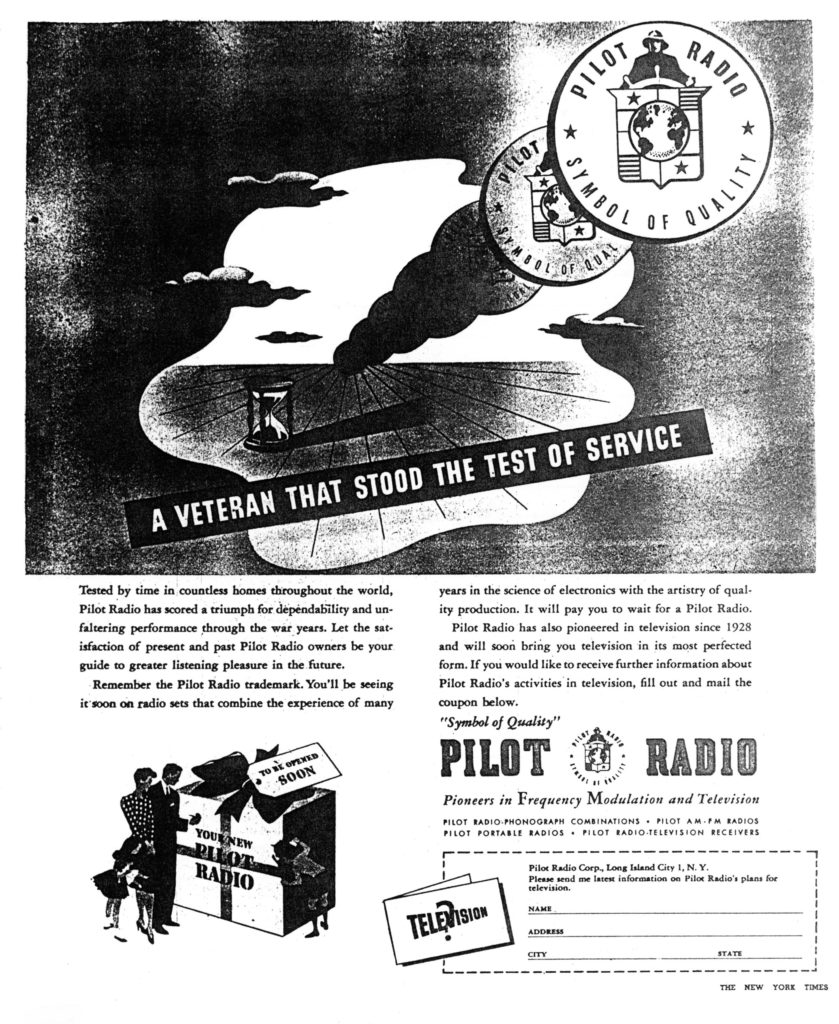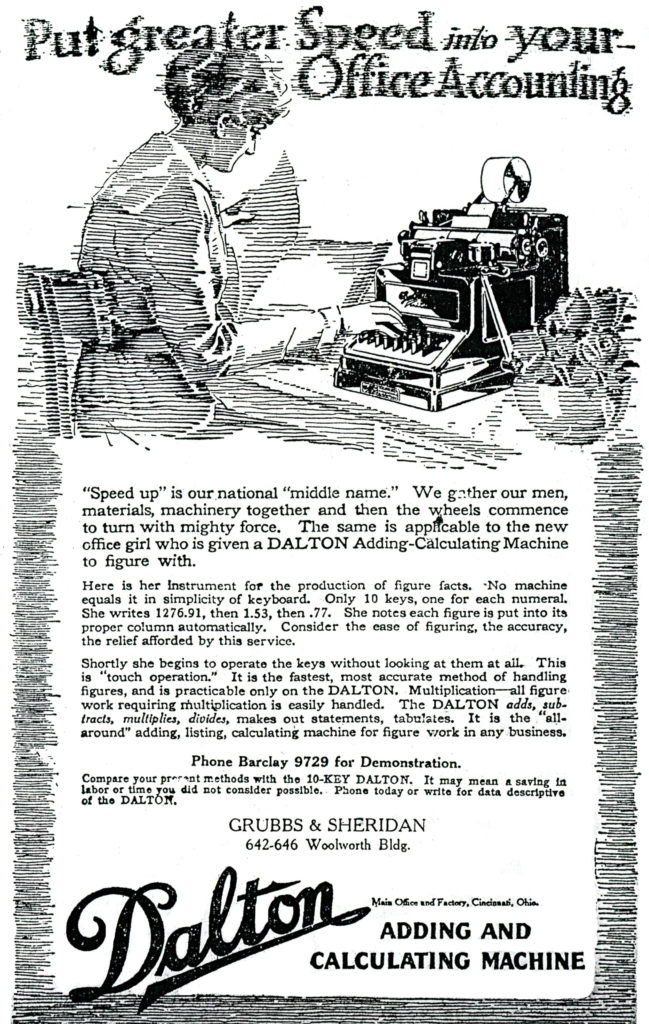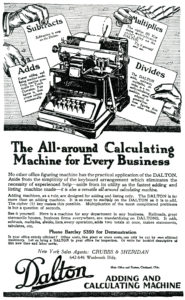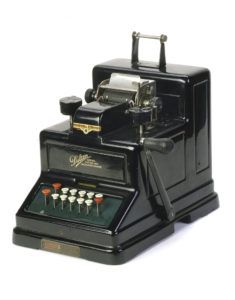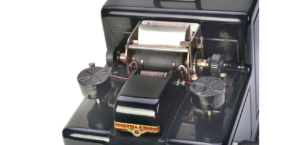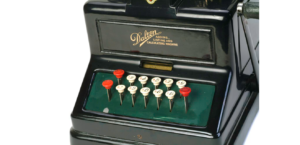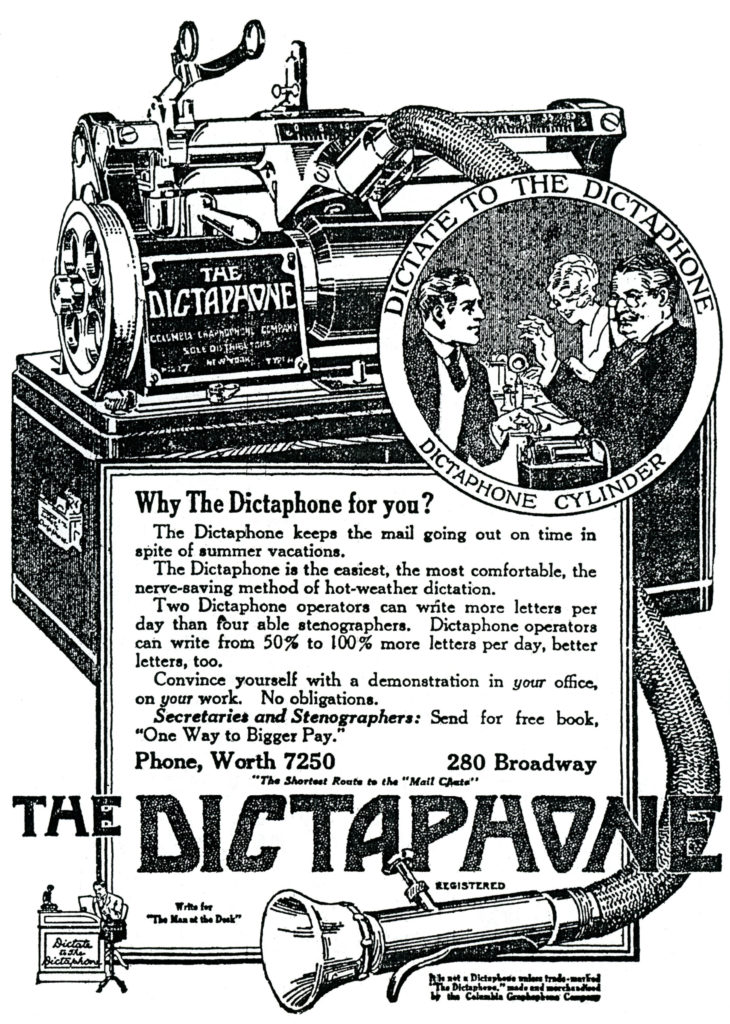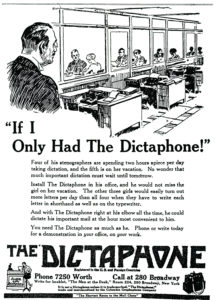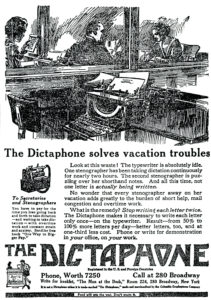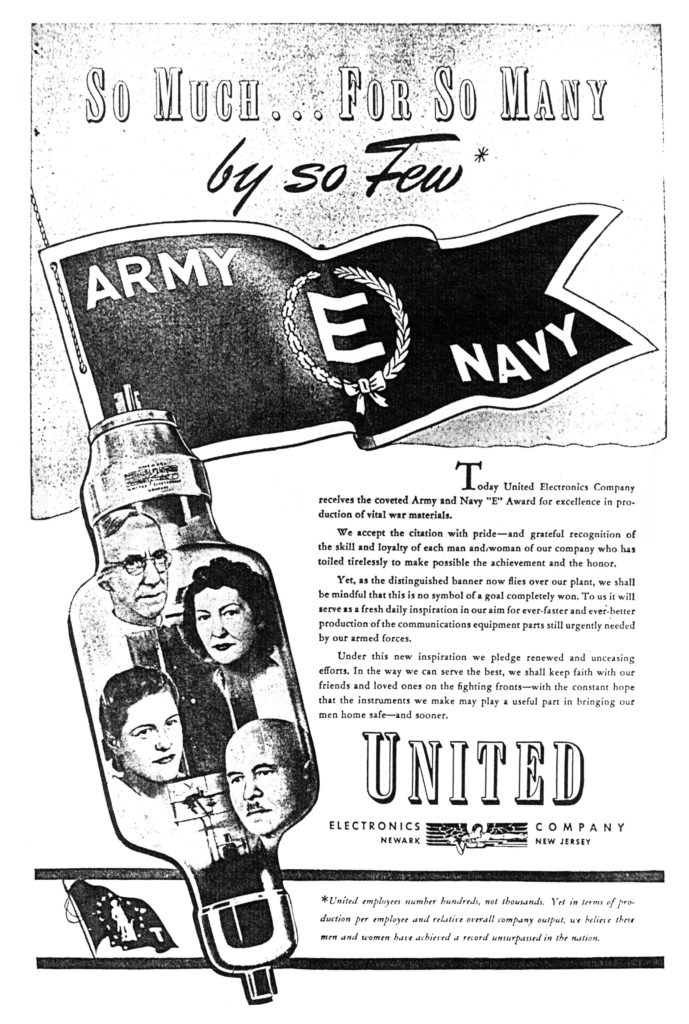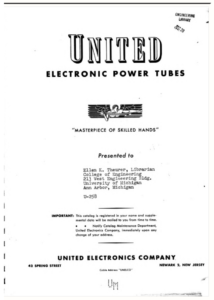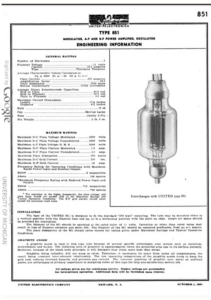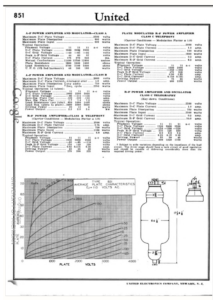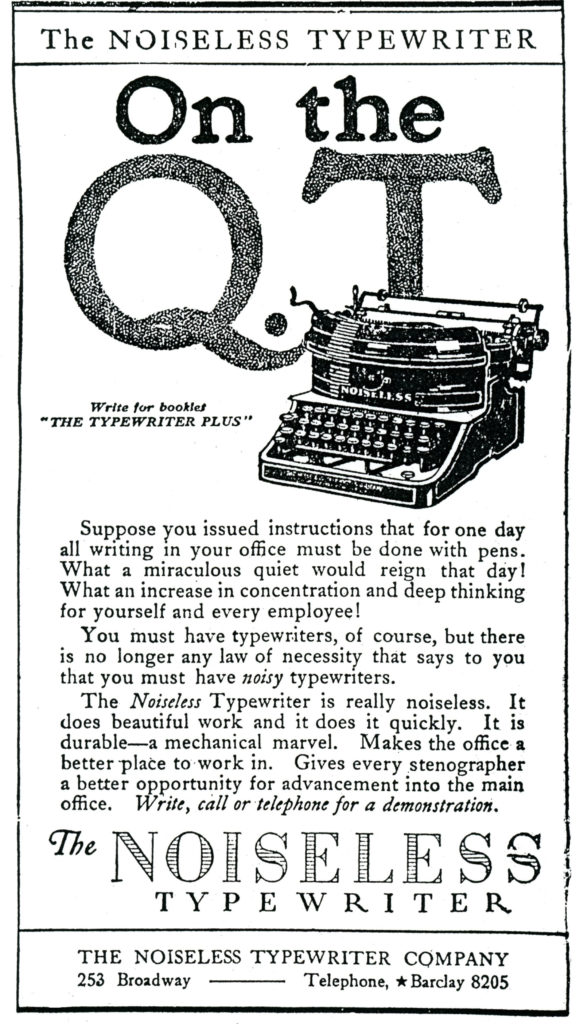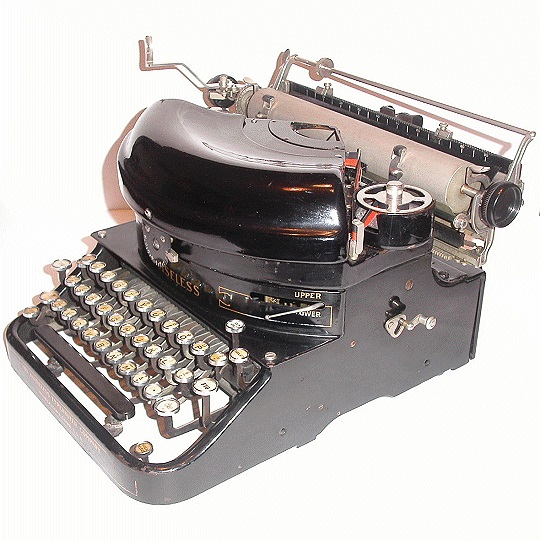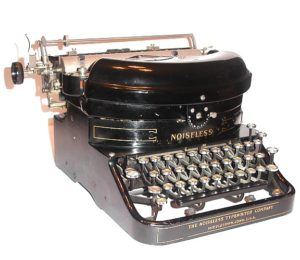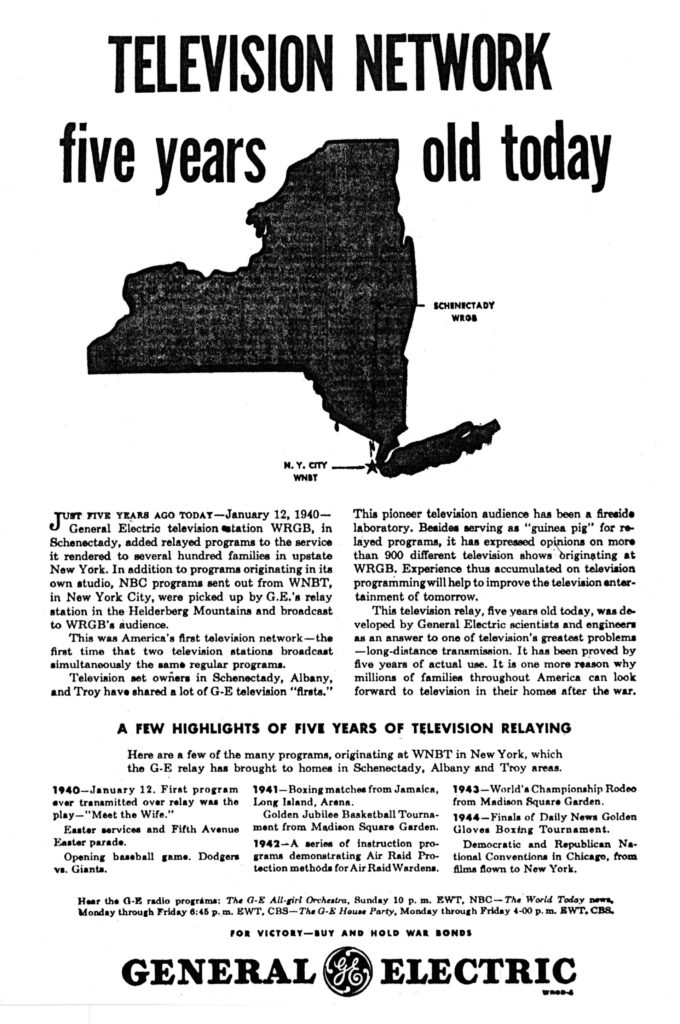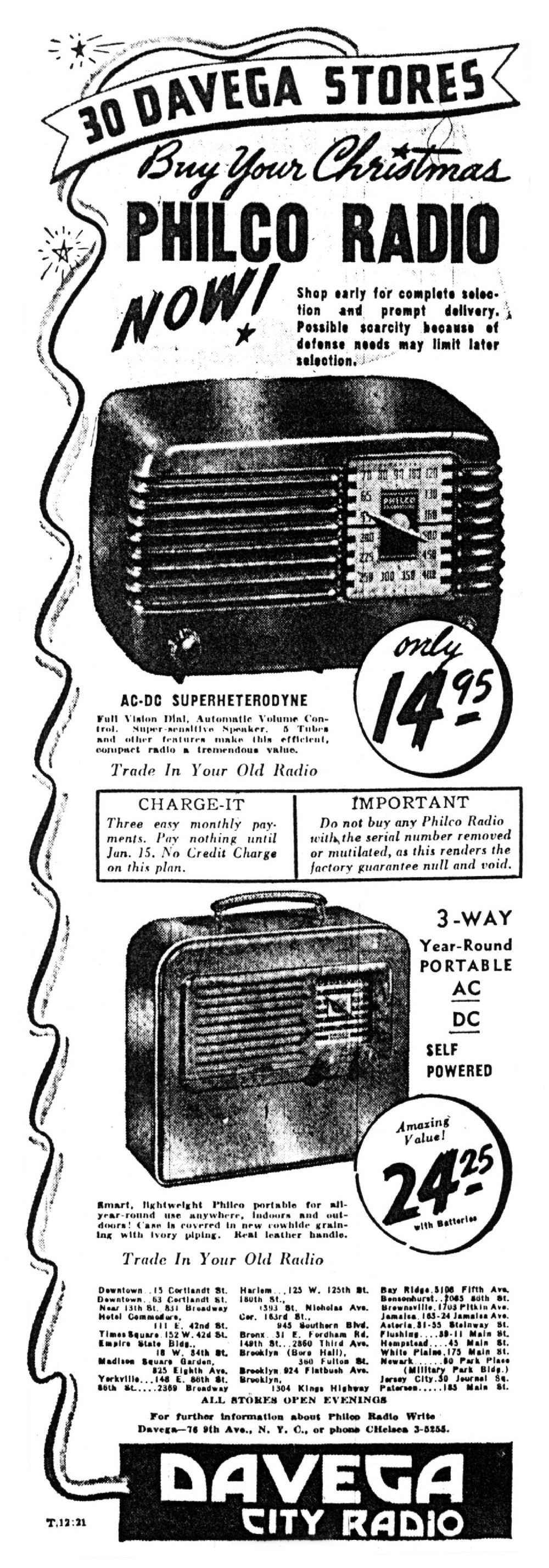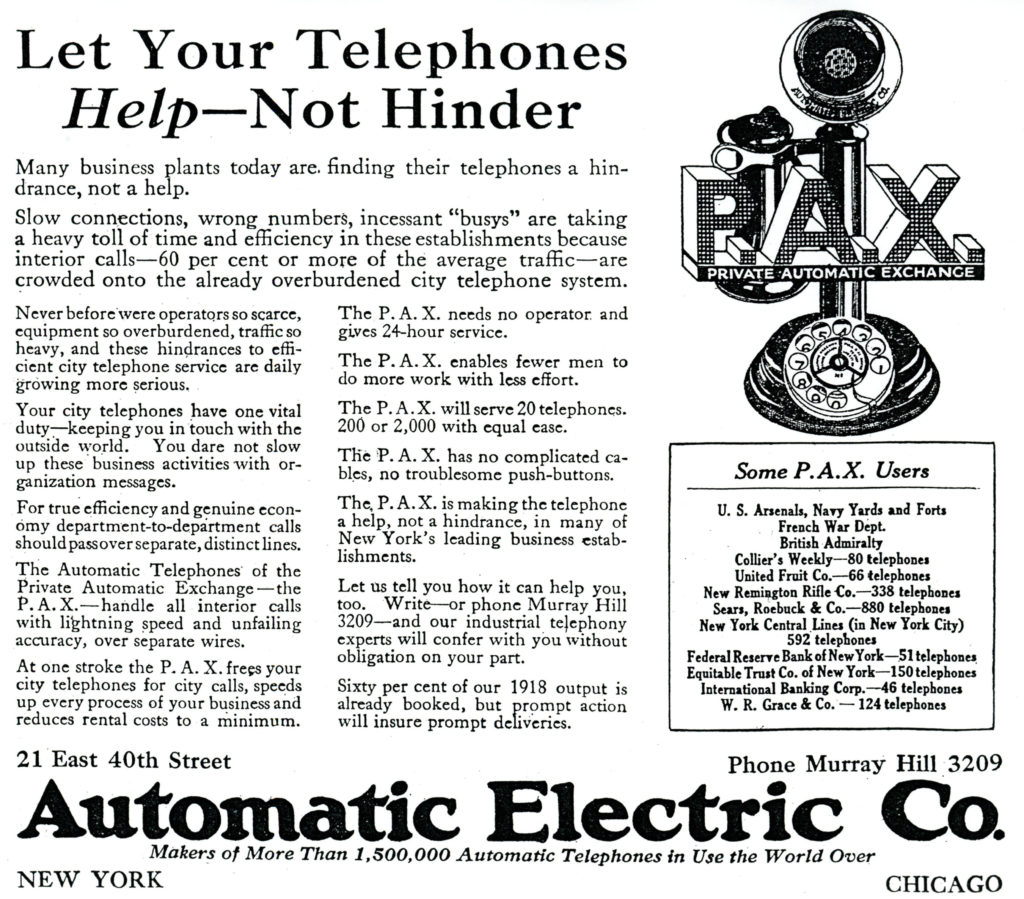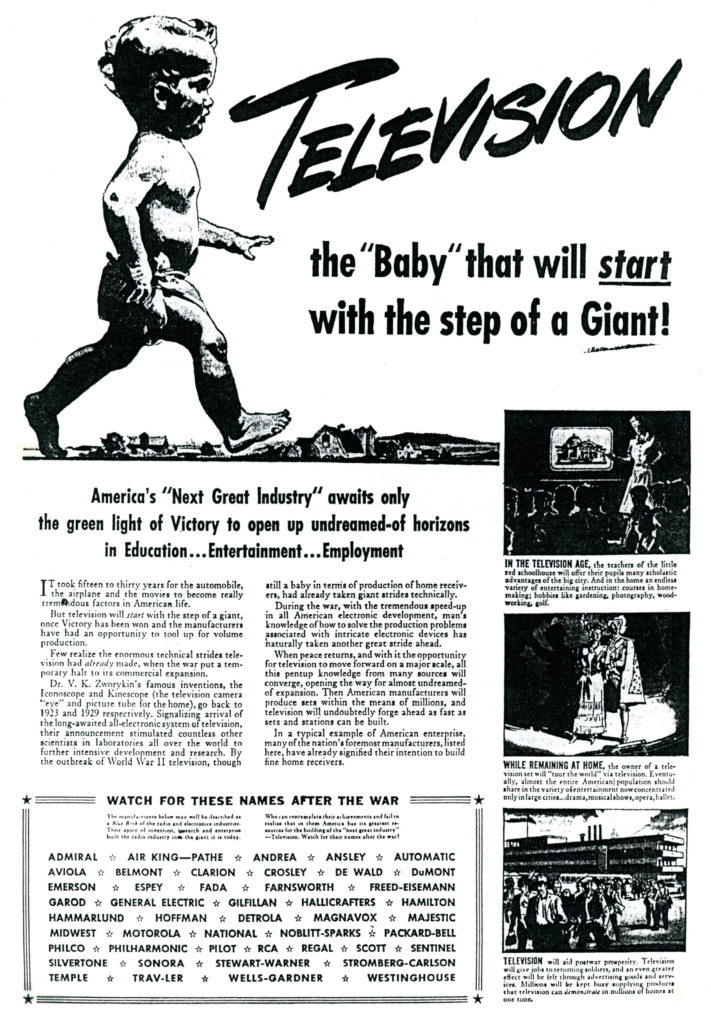We have the Dictaphone.
Now, here’s an advertisement for the the competitor of the Dictaphone: The Ediphone.
Though similar in concept to the former, the difference between the two systems was, according to ObsoleteMedia.org, “…the recording method, with Edison using ‘hill and dale’ recording, while the Graphophone used lateral (side to side) recording. The cylinders could have a layer of wax shaved off, to enable re-use.”
The advertisement below, which appeared in The New York Times on June 13, 1918, is (hey, unsurprisingly!) strikingly similar in image and message to the three advertisements for the Dictaphone: A pensive business owner or supervisor looks over the office floor, and noting three unoccupied desks – each with a placard prominently denoting that the worker is on (?! – gasp!) “Vacation”, muses upon the need to hire inadequately trained substitute employees (temps?) to accomplish the work of trained personnel. To the rescue? The Ediphone!
Intriguingly, the advertisement closes – again, as did the three ads for the Dictaphone – with the suggestion that the prospective customer obtain a copy of the Ediphone company’s free publication, “Better Letters Magazine”.
Scroll down to read the transcribed text of the advertisement…
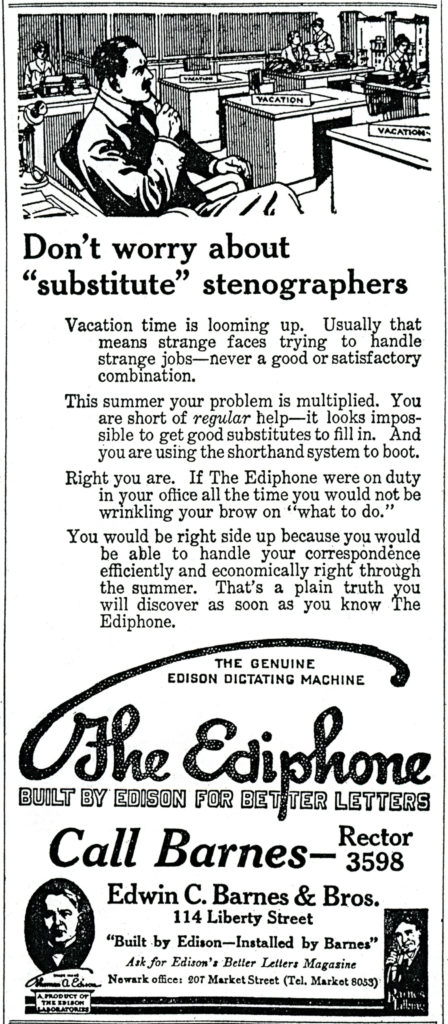
Don’t worry about “substitute” stenographers
Vacation time is looming up. Usually that means strange faces trying to handle strange jobs – never a good or satisfactory combination.
This summer your problem is multiplied. You are short of regular help – it looks impossible to get good substitutes to fill in. And you are using the shorthand system to boot.
Right you are. If The Ediphone were on duty in your office all the time you would not be wrinkling your brow on “what to do”.
You would be right side up because you would be able to handle your correspondence efficiently and economically right through the summer. That’s a plain truth you will discover as soon as you know The Ediphone.
THE GENUINE EDISON DICTATING MACHINE
The Ediphone
BUILT BY EDISON FOR BETTER LETTERS
Call Barnes – Rector 3598
Edwin C. Barnes & Bros.
114 Liberty Street
“Build by Edison – Installed by Barnes”
Ask for Edison’s Better Letters Magazine
Newark office: 207 Market Street (Tel. Market 8053)
______________________________
This video, by Shawn Borri, demonstrates how to use the Ediphone…
This video, by “The Victrola Guy“, is a presentation of a complete Edison Ediphone and Transcription Machine…
References
Dictation Machine (at Wikipedia)
Ediphone (at Museum of Obsolete Media)
Shawn Borri’s YouTube Channel (“Postings of music, and experiments, even daily thoughts of Shawn Borri, controversial ” Mad Audio Scientist”.)
TheVictrolaGuy’s YouTube Channel (“This is an ongoing series of experiments of recording on the Edison Cylinder Phonograph…”)
